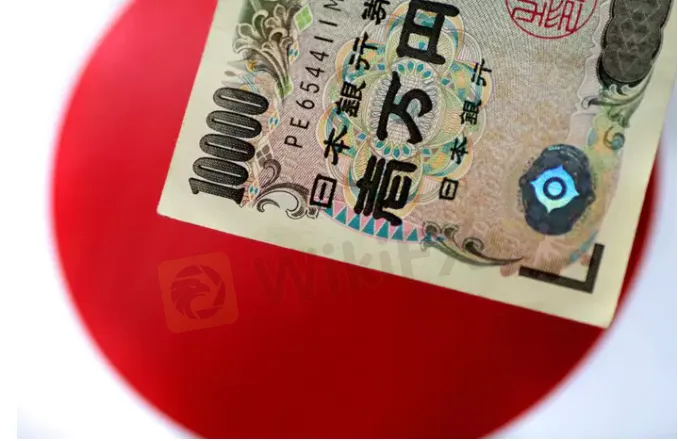简体中文
繁體中文
English
Pусский
日本語
ภาษาไทย
Tiếng Việt
Bahasa Indonesia
Español
हिन्दी
Filippiiniläinen
Français
Deutsch
Português
Türkçe
한국어
العربية
Dollar steadies, yen holds near five-year low
Abstract:The yen slid to a new five-year low on Monday, ahead of a bumper week of central bank meetings around the world which will almost certainly reaffirm the Bank of Japans position as one of the last dovish central banks standing.

The dollar slipped as European markets opened on Monday, but was still near a five-year high versus Japans yen as investors braced for a busy week of major central bank meetings.
After uncertainty about the war in Ukraine prompted a market sell-off on Friday, stock markets rebounded on Monday and commodity prices edged back down.
Analysts attributed the revival of risk appetite to the fact that Russian and Ukrainian negotiators hinted at progress in peace talks.
Currency markets were also driven by expectation that the U.S. Federal Reserve will raise rates at its meeting this week, which ends on Wednesday.
Investors were pricing in 93% chance of a 25 basis point hike.
Federal Reserve Chairman Jerome Powell last week flagged multiple interest rate increases this year.
The dollar index rose during Asian trading, coming close to a 22-month high as the rate-sensitive short term U.S. Treasury yields rose, but it then edged lower as European markets opened.
At 0857 GMT, the dollar index was down 0.1% on the day at 98.886.
“We know at this point the Fed is hyper focused on inflation so we expect Powell will continue to weigh that challenge over the conflict in the Ukraine,” said Adam Cole, chief currency strategist at RBC, in a note to clients.
The U.S. dollar hit a five-year high against the Japanese yen overnight, at 117.88, as investors bet that the Bank of Japan, which meets on Friday, would maintain its dovish stance despite rising inflationary pressures.
“USD/JPY continues to press higher driven by both higher US yields and the fallout of the fossil fuel surge on Japans trade balance,” wrote ING FX strategists in a note to clients.
At 0900 GMT, the pair had eased to 117.775.
The British pound was still near a 16-month low, flat on the day at $1.30415, ahead of the Bank of England meeting on Thursday.
The euro was up 0.5% at $1.0953.
The Australian dollar was down 0.6%, hurt by the easing of commodity prices, while the New Zealand dollar was down 0.2%.
Lockdown measures to limit the spread of COVID-19 in China saw the yuan weaken.
The dollar hit 6.382 versus the offshore yuan, the yuans weakest in more than a month.
China has reported more local symptomatic COVID-19 cases so far this year than it recorded in all of 2021, as the highly transmissible Omicron variant triggers outbreaks from Shanghai to Shenzhen.
“The Chinese yuan has started to feel the weakening pressure due to continuous bad news for the economy,” wrote Commerzbank senior economist Hao Zhou in a client note.
“China is also facing intensifying pressure from the West to clarify its stance on the Ukraine war.”

Disclaimer:
The views in this article only represent the author's personal views, and do not constitute investment advice on this platform. This platform does not guarantee the accuracy, completeness and timeliness of the information in the article, and will not be liable for any loss caused by the use of or reliance on the information in the article.
Read more

Guide to Trading News Releases & Navigating Market Volatility
Understanding when key news releases occur, identifying the most impactful ones, and effectively trading them while managing risk can set you apart from the competition. This article delves into these aspects, helping you navigate the complexities of trading forex on news releases.

The History of Ponzi Schemes
This article outlines the history of Ponzi schemes, highlighting the infamous Charles Ponzi, Bernie Madoff, and beyond.

Is High leverage Better Than low leverage?
Leverage allows traders to amplify their market exposure beyond their initial investment, making it a pivotal factor in broker selection.

PU Prime Ups Leverage Limit, Downs Stop-out Level
Leading broker PU Prime is shaking things up with a dual approach to enhance customer risk management and trading opportunities. Effective June 17th, 2024.
WikiFX Broker
Latest News
JUST Finance and UBX Launch Multi-Currency Stablecoin Exchange
XM Revamps Website with Sleek Design and App Focus
TradingView & Mexico’s Uni. Partnership, to Enhance Financial Education
Something You Need to Know About SogoTrade
Global Shift in Cryptocurrency Taxation: Italy and Denmark Chart New Paths
Webull Introduces 24/5 Overnight Trading to Extend U.S. Market Access
eToro Launches Global-Edge Smart Portfolio: A Balanced Approach to Growth and Stability
Darwinex advises traders to update MT4 & 5
Revolut X Expands Crypto Exchange Across Europe, Targeting Pro Traders
Crypto Scammer Pleads Guilty in $73 Million “Pig Butchering” Fraud
Currency Calculator



